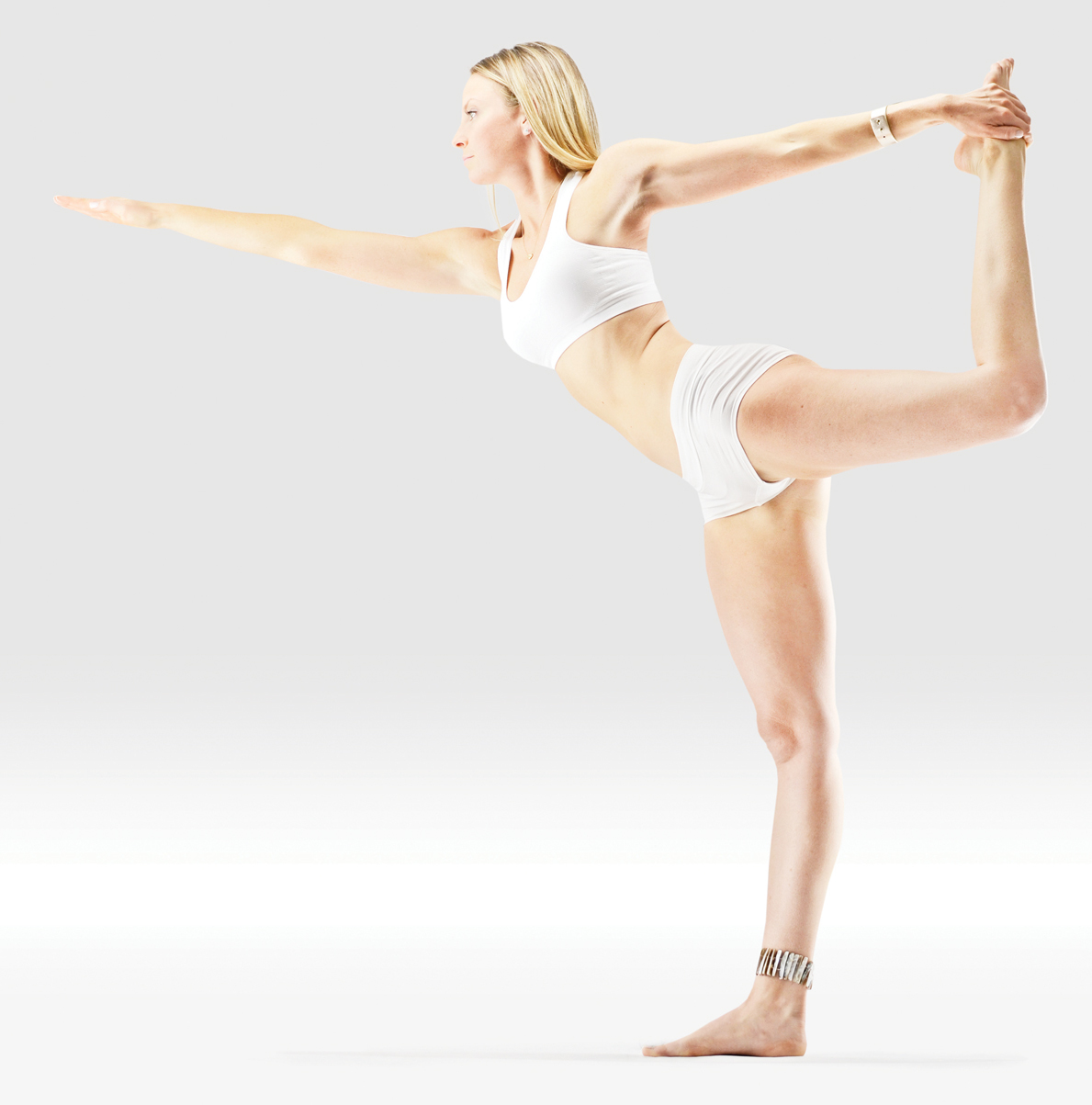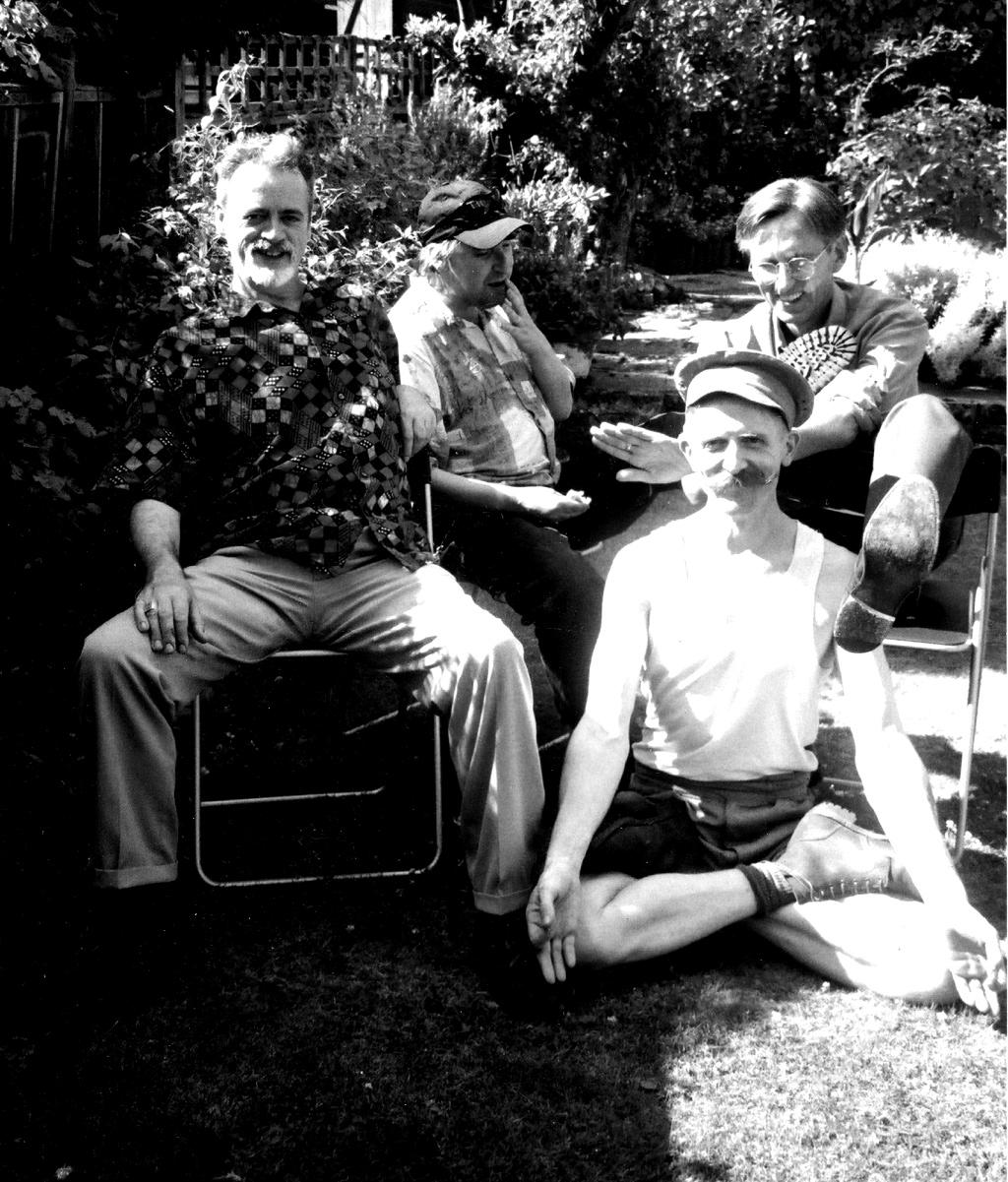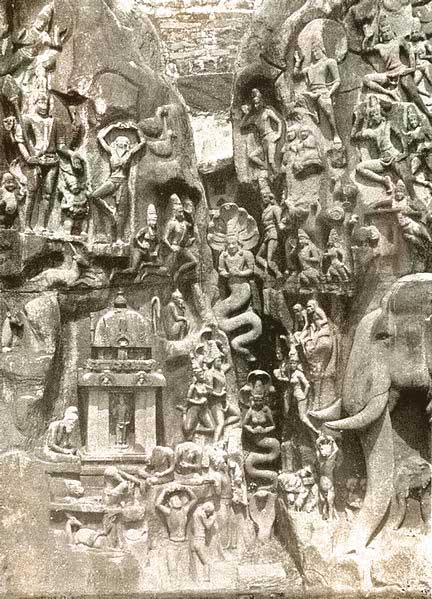|
Elliott Goldberg
''The Path of Modern Yoga: The History of an Embodied Spiritual Practice'' is a 2016 history of the modern practice of postural yoga by the yoga scholar Elliott Goldberg. It focuses in detail on eleven pioneering figures of the transformation of yoga in the 20th century, including Yogendra, Kuvalayananda, Pant Pratinidhi, Krishnamacharya, B. K. S. Iyengar and Indra Devi. The book's thesis is that modern yoga progressed in three stages from its pre-1900 state to what is observed today. Before 1900, haṭha yoga was the despised religious practice of a small minority on the fringes of Indian society. In the first stage, pioneers such as Yogendra and Kuvalayananda treated yoga as the subject of medical inquiry, making it both secular and socially acceptable. Next, advocates of exercise brought standing poses from gymnastics into yoga: Pant Pratinidhi advocated Surya Namaskar (the sun salutation), a jumped sequence of poses, as daily exercise, while Krishnamacharya incorporated tho ... [...More Info...] [...Related Items...] OR: [Wikipedia] [Google] [Baidu] |
Natarajasana
Natarajasana ( sa, नटराजासन, translit=Naṭarājāsana), Lord of the Dance Pose or Dancer Pose is a standing, balancing, back-bending asana in modern yoga as exercise. It is derived from a pose in the classical Indian dance form Bharatnatyam, which is depicted in temple statues in the Nataraja Temple, Chidambaram. Nataraja, the "Dancing King", is in turn an aspect of the Hindu God Shiva, depicted in bronze statues from the Chola dynasty. The asana was most likely introduced into modern yoga by Krishnamacharya in the early 20th century, and taken up by his pupils, such as B. K. S. Iyengar, who made the pose his signature. Natarajasana is among the yoga poses often used in advertising, denoting desirable qualities such as flexibility and grace. Etymology and mythology The name comes from the Sanskrit epithet Nataraja, "Dancing King", one of the names given to the Hindu God Shiva in his form as the cosmic dancer, and आसन ''asana'' meaning "posture" or "se ... [...More Info...] [...Related Items...] OR: [Wikipedia] [Google] [Baidu] |
Swami Kuvalayananda
Swami Kuvalayananda (born Jagannatha Ganesa Gune, 30 August 1883 – 18 April 1966) was a yoga guru, researcher, and educator primarily known for his pioneering research into the scientific foundations of yoga. He started research on yoga in 1920, and published the first journal specifically devoted to studying yoga, ''Yoga Mimamsa'', in 1924. Most of his research took place at the Kaivalyadhama Health and Yoga Research Center at Lonavla which he founded in 1924. He has had a profound influence on the development of yoga as exercise. Early life Swami Kuvalayananda was born Jagannatha Ganesa Gune in a traditional Karhade Brahmin family in the village Dhaboi in Gujarat state, India. Kuvalayananda’s father, Sri Ganesa Gune, was a teacher and his mother, Srimati Saraswati, a housewife. The family was not rich and had to depend for some time on public and private charity. Being from a poor family, Kuvalayananda had to struggle hard for his education. Nevertheless, at his matricula ... [...More Info...] [...Related Items...] OR: [Wikipedia] [Google] [Baidu] |
Yoga In Britain
Yoga in Britain is the practice of yoga, including modern yoga as exercise, in Britain. Yoga, consisting mainly of postures (asanas), arrived in Britain early in the 20th century, though the first classes that contained asanas were described as exercise systems for women rather than yoga. Classes called yoga, again mainly for women, began in the 1960s. Yoga grew further with the help of television programmes and the arrival of major brands including Iyengar Yoga and Ashtanga Vinyasa Yoga. Before the 20th century, yoga was known only from the reports of travellers to India, which described deceptive vagabonds pretending to be pious. Among the first to publicise yoga in Britain in the early 1900s was the occultist Aleister Crowley, who confused yoga with magic in the public mind. In the 1930s, instructors such as Mary Bagot Stack taught postures similar to several modern asanas to women in Britain between the world wars, but these were not then described as yoga. At the same ti ... [...More Info...] [...Related Items...] OR: [Wikipedia] [Google] [Baidu] |
Light On Yoga
''Light on Yoga: Yoga Dipika'' (Sanskrit: योग दीपिका, "Yoga Dīpikā") is a 1966 book on the Iyengar Yoga style of modern yoga as exercise by B. K. S. Iyengar, first published in English. It describes more than 200 yoga postures or asanas, and is illustrated with some 600 monochrome photographs of Iyengar demonstrating these. The book has been described as the 'bible of modern yoga', and its presentation of the asanas has been called "unprecedented" and "encyclopedic". It has been translated into at least 23 languages and has sold over three million copies. Context Yoga is a group of physical, mental, and spiritual practices from ancient India, forming one of the six orthodox schools of Hindu philosophical traditions. In the Western world, however, yoga is often taken to mean a modern form of medieval Hatha yoga, practised mainly for exercise, consisting largely of the postures called asanas. B. K. S. Iyengar (1918-2014) was born in a poor family ... [...More Info...] [...Related Items...] OR: [Wikipedia] [Google] [Baidu] |
Cinema Of The United States
The cinema of the United States, consisting mainly of major film studios (also known as Hollywood) along with some independent film, has had a large effect on the global film industry since the early 20th century. The dominant style of American cinema is classical Hollywood cinema, which developed from 1913 to 1969 and is still typical of most films made there to this day. While Frenchmen Auguste and Louis Lumière are generally credited with the birth of modern cinema, American cinema soon came to be a dominant force in the emerging industry. , it produced the third-largest number of films of any national cinema, after India and China, with more than 600 English-language films released on average every year. While the national cinemas of the United Kingdom, Canada, Australia, and New Zealand also produce films in the same language, they are not part of the Hollywood system. That said, Hollywood has also been considered a transnational cinema, and has produced multiple lan ... [...More Info...] [...Related Items...] OR: [Wikipedia] [Google] [Baidu] |
Gymnastics
Gymnastics is a type of sport that includes physical exercises requiring balance, strength, flexibility, agility, coordination, dedication and endurance. The movements involved in gymnastics contribute to the development of the arms, legs, shoulders, back, chest, and abdominal muscle groups. Gymnastics evolved from exercises used by the ancient Greeks that included skills for mounting and dismounting a horse, and from circus performance skills. The most common form of competitive gymnastics is artistic gymnastics (AG), which consists of, for women (WAG), the events floor, vault, uneven bars, and beam; and for men (MAG), the events floor, vault, rings, pommel horse, parallel bars, and horizontal bar. The governing body for gymnastics throughout the world is the Fédération Internationale de Gymnastique (FIG). Eight sports are governed by the FIG, which include gymnastics for all, men's and women's artistic gymnastics, rhythmic gymnastics, trampolining (including double mini-t ... [...More Info...] [...Related Items...] OR: [Wikipedia] [Google] [Baidu] |
Standing Asanas
The standing asanas are the yoga poses or asanas with one or both feet on the ground, and the body more or less upright. They are among the most distinctive features of modern yoga as exercise. Until the 20th century there were very few of these, the best example being Vrikshasana, Tree Pose. From the time of Krishnamacharya in Mysore, many standing poses have been created. Two major sources of these asanas have been identified: the exercise sequence Surya Namaskar (the salute to the sun); and the gymnastics widely practised in India at the time, based on the prevailing physical culture. The origin of standing asanas has been controversial since Mark Singleton argued in 2010 that some forms of modern yoga represent a radical reworking of hatha yoga, in particular by adding standing asanas and transitions ( vinyasas) between them, and by suppressing most non-postural aspects of yoga, rather than a smooth continuation of ancient traditions. These changes enabled yoga to be practise ... [...More Info...] [...Related Items...] OR: [Wikipedia] [Google] [Baidu] |
Hatha Yoga
Haṭha yoga is a branch of yoga which uses physical techniques to try to preserve and channel the vital force or energy. The Sanskrit word हठ ''haṭha'' literally means "force", alluding to a system of physical techniques. Some haṭha yoga style techniques can be traced back at least to the 1st-century CE, in texts such as the Hindu Sanskrit epics and Buddhism's Pali canon. The oldest dated text so far found to describe haṭha yoga, the 11th-century ''Amṛtasiddhi'', comes from a tantric Buddhist milieu. The oldest texts to use the terminology of ''hatha'' are also Vajrayana Buddhist. Hindu hatha yoga texts appear from the 11th century onwards. Some of the early haṭha yoga texts (11th-13th c.) describe methods to raise and conserve bindu (vital force, that is, semen, and in women ''rajas –'' menstrual fluid). This was seen as the physical essence of life that was constantly dripping down from the head and being lost. Two early Haṭha yoga techniques sought to e ... [...More Info...] [...Related Items...] OR: [Wikipedia] [Google] [Baidu] |
Yoga
Yoga (; sa, योग, lit=yoke' or 'union ) is a group of physical, mental, and spiritual practices or disciplines which originated in ancient India and aim to control (yoke) and still the mind, recognizing a detached witness-consciousness untouched by the mind ('' Chitta'') and mundane suffering (''Duḥkha''). There is a wide variety of schools of yoga, practices, and goals in Hinduism, Buddhism, and Jainism,Stuart Ray Sarbacker, ''Samādhi: The Numinous and Cessative in Indo-Tibetan Yoga''. SUNY Press, 2005, pp. 1–2.Tattvarthasutra .1 see Manu Doshi (2007) Translation of Tattvarthasutra, Ahmedabad: Shrut Ratnakar p. 102. and traditional and modern yoga is practiced worldwide. Two general theories exist on the origins of yoga. The linear model holds that yoga originated in the Vedic period, as reflected in the Vedic textual corpus, and influenced Buddhism; according to author Edward Fitzpatrick Crangle, this model is mainly supported by Hindu scholars. According ... [...More Info...] [...Related Items...] OR: [Wikipedia] [Google] [Baidu] |
Bhawanrao Pant Pratinidhi
Bhawanrao Shriniwasrao Pant Pratinidhi C.B.E (October 24, 1868 – April 13, 1951), popularly known as Balasaheb Pant Pratinidhi or Bhawanrao Balasaheb Pant Pratinidhi, was the ruler of the princely state of Aundh of British Raj during the reign (1909 – 1947). He is known for inventing the exercise sequence of Surya Namaskar, Salute to the Sun, now incorporated into modern yoga as exercise. Life Bhawanrao Shriniwasrao was born to Shriniwasrao Parashuram "Anna Sahib" (7th Raja of Aundh) on 24 October 1868 in a Deshastha Brahmin family. He studied at Satara High School and completed his Bachelor of Arts in Deccan College of University of Bombay in Pune. He ascended the throne as the Raja of Aundh State on 4 November 1909. Although Balasaheb was not a scholar, he was avid reader and his Sanskrit was tolerably good. He worked as Chief Secretary to his father from 1895-1901 in order to learn the Administration of the State. Aundh Experiment The Aundh Experiment was an e ... [...More Info...] [...Related Items...] OR: [Wikipedia] [Google] [Baidu] |
Aundh State
Aundh State was a Maratha princely state in the British Raj, in the Deccan States Agency division of the Bombay Presidency. The Principality of Aundh covered an area of 1298 square kilometers with the population of 88,762 in 1941. The capital of the state was Aundh. History Aundh was a Jagir granted by Chhatrapati Sambhaji to Parshuram Trimbak Pant Pratinidhi, who was a general, administrator and later Pratinidhi of the Maratha Empire during the reign of Chhatrapati Sambhaji and Chhatrapati Rajaram. He played a crucial role in re-capturing Panhala Fort, Ajinkyatara (at Satara), Bhupalgad forts from Mughals during period of 1700–1705. After the fall of Peshwa rule, the British East India company entered separate treaties in 1820 with all the Jagirdars who were nominally subordinate to the Raja of Satara. Aundh became a princely state when Satara state was abolished by the British under the Doctrine of lapse. The last ruler of the Aundh was Raja Shrimant Bhawanrao ... [...More Info...] [...Related Items...] OR: [Wikipedia] [Google] [Baidu] |







